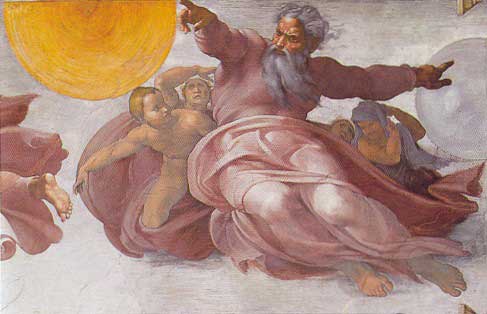
“Society is the inertia of expectation.”
Liberal societies value highly their freedom of expression, especially the freedom to consume. The consumer citizen thus performs identity by following the cycles of fashion, which season after season offer a chance to facilitate identification with a specifically charged form and more importantly allegiance to the hierarchy of commodities itself. In this colorful world, why then is there a persistent phenomenon of uni-form-ity all over the world? Every day, innumerous battalions of urbanites flood into offices wearing the suit, a rather minimalistic and non-creative form of expressiveness. Why is the suit persisting against all possibilities of fashion?
Of course, one may also have come to observe, how citizens wearing the suit are subject to profound behavioral changes. Is there a possibility, then, that the suit is a life-form of its own? This idea brings about a hypothesis: namely, that it is not the administrative classes wearing the suit, but rather that the suit, as an autonomous organism and cultural meme, has colonized the administrative classes…
Magic of the Suit
"The suit bestows a fraction of social power onto those cloaking themselves in it. Thick and viscous power trickles down from the tailored top of the pyramid to the worst cut suits of security personnel guarding the entrances to the glass towers of capital."
Magic powers have been conferred onto the suit. As an obtrusive character, the suit forces itself into our imagination of politics, economy, and the office. Because it is the emanation and the supreme representation of Western and worldly power, we have always dreamed of the suit: the young girl is primed to imagine her dream husband in a suit; young boys dream of wearing the suit when they imagine successful lives. The suit bestows a fraction of social power onto those cloaking themselves in it. Thick and viscous power trickles down from the tailored top of the pyramid to the worst cut suits of security personnel guarding the entrances to the glass towers of capital. Subtle ubiquitous behavioral modifications ensue: one may have experienced the pleasure of observing the unaccustomed person wearing a suit, suddenly adapting a range of gentlemanly behaviors which the suit has programmed into him from early childhood on, and in an instant sets free. The young man straightens his back; his movements attain the violence of an awkward gravitas. Similarly, young women, unaccustomed to a man wearing a suit, may soon break into a childish giggle when accompanied by one. In these instances, the suit reveals just a shadowy glimpse of its power which nonetheless hints at its real nature: a mass cognitive device and a powerful social technology. The suit introduces those who wear it into a subtle matrix of behavioral constraint which expresses itself in physical, financial, and communicative terms.
Physicality of the Suit
The suit is a despotic character who aims at dominating the body. The suit gives shape to bodies. Real men eager to make an impression will wear a suit: they ceremonially align their bodies with society’s power structure by drawing on its magic. Immediately they descend into a strange kind of paralysis: by virtue of its cut, the suit suggests an immobile dignity of the body. Hypertrophying the shoulder-parts while restricting the free movement of the arms the suit is true heavy armor. In the corporate world, this shield is needed in order to deafen the omnipresent impact and onslaught of the private in the workplace. Dreams of unlimited movement and freedom shatter against the stern integrity of the suit. Correspondingly, the combination of dress-shirt, stiff collar and tie [1] restrict the free movement of the head, casting the body into an upright and immobile posture supported by the ossified rigidity of the wooden-heeled shoes which must be worn to match the suit.
In effect, the assemblage of shirt, tie and collar thereby disarms the sensuality of the neck, and works towards the impairment of a physicality or chemistry of the bodies. It is imperative to reduce both for the sake of approaching the frictionless and automatic interaction of bodies in the workplace. Of course, the stiff body of the suit-shirt assemblage is the same body created by the military and cultivated by the early bourgeoisie. A body capable of enduring six-hour long opera performances [2] with minimal physical movement, and which can thereby be disciplined to be easily integrated into the desk structures of the schools, universities and the workplace, essential for modern administrative systems. Depriving the body of movement then is crucial in order to facilitate the spiritual domination of the subject: Negation of bodily activity creates the proto-schizophrenic subject that has learned to ignore his [3] body for the sake of workplace rationality. Lack of physical activity and the ensuing accumulation of cortisol, as a consequence creates the compulsive thinker. The suit stipulates the administrative classes as distracted herd with clouded and autistic thoughts.
Economy of the Suit
The suit is an idle and narcissistic spirit requiring attention and constant devotion. It is both a financial asset and the micropolitical germ cell and quintessence of workplace hierarchy and necessity. The inexperienced newcomer soon gets caught up in this relationship with the narcissistic egotism of the suit, which he must steadily maintain (dry-clean) and provide with admiring gifts (the right accessories). He must engage in this activity if he wants to attain the respect of the other suits [4] as well as approach the formal dignity of the next hierarchical rank. With advance in rank comes a closer scrutiny [5] of the status symbols and details which, similar to badges in the military, reflect upon the hierarchy of plutocracy. Although in times of increased digital pollution the classical watch has become nearly obsolete as a practical object, certain members of the executive class have been observed to ask each other for the time, to gain a respective glance at this anachronistic status symbol, and thus pass a definite verdict on their counterpart. The matrix of maintenance of appearance and status is the whip guaranteeing the steady discipline which maintains the administrative classes in tight bondage with their workplace.
Communication of the Suit
As a vivid socialite, the suit continuously talks to its surroundings. Because it is devout to the exigencies of the machine character of an economy which is irritated by the empathy between bodies, the suit spreads a variety of rumors which function as cognitive separation mechanisms in the everyday. The suit is racist, introducing the binary of the suited/non-suited into the everyday. It separates those it is wearing from the non-suited part of the population. The suit polarizes and confronts him who wears it with the sudden change in behavior of those around him: they from now on approach him alternatively with slavish servility, professional complicity, or resentful hostility. Meanwhile the suit changes the behavior of him who wears it towards those without a suit. The well-cut suit elevates into the community of the suits, the managerial class of things official and powerful. Because the suit has whispered idiosyncrasies into his head, the suited becomes aware of the code and exigencies of detail related to the suit. Filled with such knowledge, the suited cannot approach his surroundings with innocence anymore and is bound to lose respect of the non- and badly suited.
As with the communication of the suited with the non-suited, the suit must disrupt the communication of the individual with himself. His former self must become modified and altered into the work-self of the suit. The suit must become part of the fabric of identity. A social phoenix emerges from the ashes of the former self and the suit completes the magical act of separation between the private domain and the workplace, enabling the digression of the “professional” [6] self from original identity. The person unaccustomed to the suit is silenced by its aura. The individual’s original character and habits do not seem appropriate anymore to the dignified and professional persona which is suggested by the suit. The newly suited will align himself with the majority culture of the suit into which he is initiated. Thus he is allowed to leave behind his shameful [7] past.
Epilogue: Exorcism of the Suit
The enemy of the suit is the de-signer who assumes his historical responsibility. He aims at disenchantment of all Victorian era atavisms and mass social technologies of rigidity, machinization, hierarchy, separation. He exorcises the suit. The de-signer subverts the deep-brandings of the psychotropical fabric of the suit; he decrypts, displays and consequently modifies the dream structure of the religious herd. His exposure renders impossible the continuous conduct of unconscious affairs and habits he has tainted with the grenade splinters of alien information bound to wreck the cogwheel machinery of society.
The historical task of the de-signer is to be the controlled-demolition expert coolly implanting the plastic explosives of subversive doubt and strategic dissonance into the coordinates of the everyday—until the reality he has lost touch with itself implodes, collapses, vanishes into oblivion before our very eyes.
Reality must be defeated…
Notes
[1] According to the chants and legends of the white-collar slaves, the tie suggests the constant threat to life (strangling) issued by the owners of capital against the administrators in case of the latter’s neglect or fraud. See also the Iranian revolution’s rejection of the tie as a symbol of capitalist domination, or Anglo traditions of the school uniform.
[2] The epitome of which is the Wagnerian bombardment.
[3] His because the suit, collar, tie assemblage is mainly a tool for the domination of raw masculine energy.
[4] Who will encourage and applaud him to do so, to thereby cement his initiation.
[5] Exemplified by the at times neurotic observance by financial and corporate executives of details like a loosely knotted tie, or the wrong accessories which may set a prejudice of collective disfavor against the uninitiated.
[6] The professional self thus is thus permitted to take decisions based upon professional indicators against personal preference. The professional is capable of downsizing of excess human-capital and fulfilling the historical duty of murder. Stanley Milgram has dealt extensively with the disruption of empathy through symbols of authority.
[7] Which is why the suit is particularly effective for the lower and lower middle classes, who are often particularly brutal in their quest for social reussite, in order to overcompensate for the humiliation of poverty, non-distinction, and un-ease.

